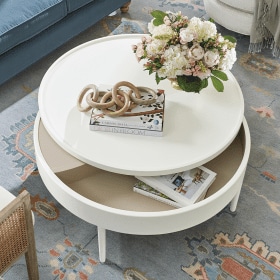Gardening can seem like a daunting hobby. It’s a long term commitment, you don’t see results right away, and it requires daily attention. But with the right mindset and preparation, you can have a fulfilling, low-stress gardening journey. To help you develop that green thumb, we’re sharing tips from Mississippi-based landscape architect, Brantley Snipes. So grab your gloves and fill up your watering can, it’s time to start a garden!
 1. Get in the right mindset
1. Get in the right mindset
Before you get started, it’s a good idea to assess if you can realistically take on a garden. Ask yourself if you have enough time to tend to your garden daily, if you’re okay with being out in the heat, and who can tend to your garden if you go away for vacation. It’s important to think through the required elements if you want to yield the best results.
2. Start garden prep early
According to Brantley, the best time to begin prepping your garden is during the non-growing months, so late fall through the winter. During this time, you should focus on your planting, establishing a strong foundation for your garden, and brainstorming garden layout ideas. Here are a few questions to consider during this stage:
- How will you irrigate your garden?
- Is your hose convenient to your beds?
- What kind of soil composition do you have?
- What types of plants like your soil and weather conditions?
- Will you need to fertilize, spray for bugs, or prune throughout the year?
- What will be your garden layout?
- How much light does your garden get?
3. Find the perfect garden spot
If you’re not sure where to put your garden, a good rule of thumb is close to your backdoor, but not in direct site of the main views of your house. Ease of access is crucial to the success of your garden; however, you don’t want it to be front and center in case the garden becomes unsightly. Don’t have enough land for a full garden? Brantley suggests starting with containers on your patio, “Gardens don’t have to be stand alone operations. They can be worked into existing landscape structures if there are shared growing conditions.”
 4. Don’t forget about sunlight
4. Don’t forget about sunlight
Another thing to consider for your garden spot is the amount of sunlight the area receives. Make sure your garden layout accounts for the sunlight requirements for the specific plants you want to grow and group them accordingly. Here are are some quick sunlight guidelines for common vegetables:
- Fruit-like Vegetables: High Sunlight (6-8 hours a day)
- Tomatoes
- Cucumbers
- Melons
- Peppers
- Root Vegetables: Medium Sunlight (4-6 hours a day)
- Carrots
- Radishes
- Potatoes
- Broccoli
- Leafy Vegetables: Low Sunlight (3-4 hours a day)
- Kale
- Lettuce
- Spinach
- Cabbage
5. Decide what to grow
When you start a garden, keep in mind that some things are easier to grow than others. For first time growers, Brantley is big on herbs, “I can easily grow basil, rosemary, thyme, and oregano in a pot right beside my grill and access them for summer suppers.” She also recommends cherry tomatoes, cucumbers, squash, and okra if you live in the deep South. As far as cut flowers, sinnias, coneflowers, sunflowers, and cosmos all make for an easy, abundant harvest.
6. Keep up with watering
Water and light are key for a succesful garden. Luckily, you can control the amount of water your garden receives with the help of water hoses and irrigation systems. For the best results, Brantley advises watering during certain times of day, “Water your garden first thing in the morning or later in the early evening, never in the heart of mid-day.” As for watering frequency, how much you water your garden can vary depending on climate, location, and types of plants. To make life easier, group plants according to their water requirements when you work on your garden layout.
7. Add garden accents
Lastly, incorporate garden accents to establish visual interest. Our new garden collection by the legendary Bunny Williams is a great place to start. Use whimsical pieces from this collection like unique edging, tall trellises, and bird houses to really make your garden come alive. If you’re going the container route, variety and height are critical. Look for containers, planters, and plant stands in different shapes and sizes for a well-rounded look. Remember, this is your garden and you can make it a reflection of your personal style. Don’t be afraid to have fun with it!
Need more outdoor inspiration? Read these related posts to learn more:
- 4 Tips for Creating a Classic, Lush Container Garden
- 5 Outdoor Decorating Rules to Live By
- How to Create a Living Arrangement
- 25 Dreamy Patios, Pools, and Porches
To stay up to date with all things How to Decorate, sign up for our monthly newsletter.































PATRICIA HELEN LINSTER
Thank you for the ideas.
Janet Granton
I am totally amazed by the photos of the beautiful furniture and arrangements! Impressive!